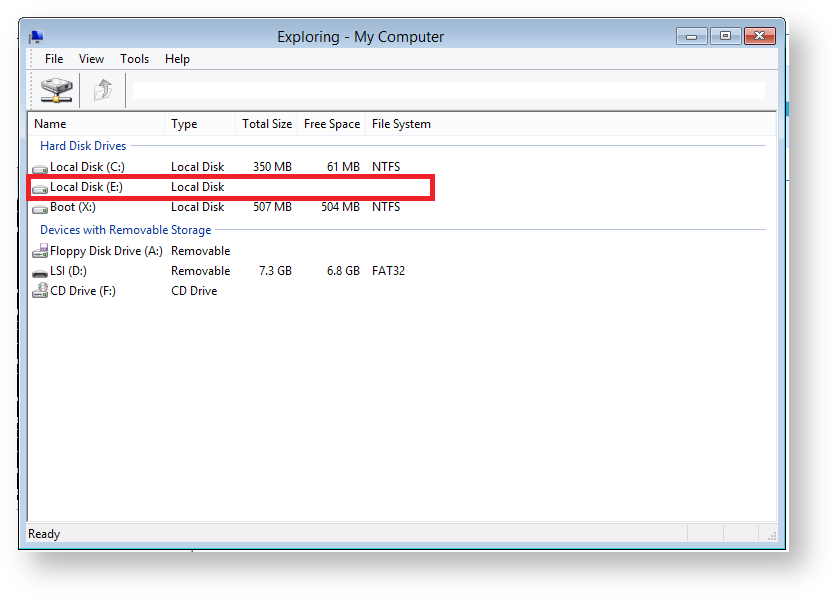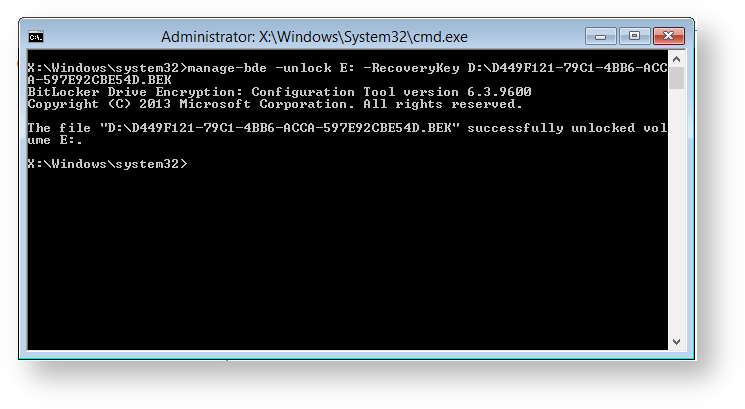You are viewing an old version of this page. View the current version.
Compare with Current
View Page History
« Previous
Version 8
Next »
Macrium Reflect can include the components necessary to unlock Microsoft BitLocker drives in Windows PE.
Enabling export of the BitLocker recovery key
Saving the recovery key
Unlocking the drive in Windows PE
Click here to expand...
The encrypted drive can now be unlocked in Windows PE
- Boot into Windows PE. Click the Backup tab. The encrypted drive will be visible and its status will be ‘BitLocker Locked’. It will not have a drive letter.

- A drive letter will be needed to unlock the encrypted drive.
Open ‘Window PE Explorer’, Click on the computer icon in the bottom left hand corner of your screen. A new window will appear presenting all the Drives available to Windows PE. 

- Start a command prompt.

The command line can be accessed by clicking the black icon on the bottom left corner of your screen.
In the command line enter “manage-bde -unlock E: - RecoveryKey D:\” then press the ‘Tab’ key until you see a key that resembles the following combination: “XXXXXXXX-XXXX-XXXX-XXXX-XXXXXXXXXX” and ends with “.BEK” to auto-complete the line after the drive letter.
manage-bde -unlock E: - RecoveryKey D:\XXXXXXXX-XXXX-XXXX-XXXX-XXXXXXXXXX.BEK
After entering the command press ‘Enter’ to unlock the BitLocker Encrypted drive:

- To make the drive accesible in Macrium Reflect, select the 'Backup' tab in Reflect and click Refresh.

After refreshing the drives in Macrium Reflect you will now be able to see a drive letter and a status on the drive that was locked.

After unlocking the drive you can now freely access files on the drive using PE Explorer and perform imaging and cloning of the drive within Windows PE.














